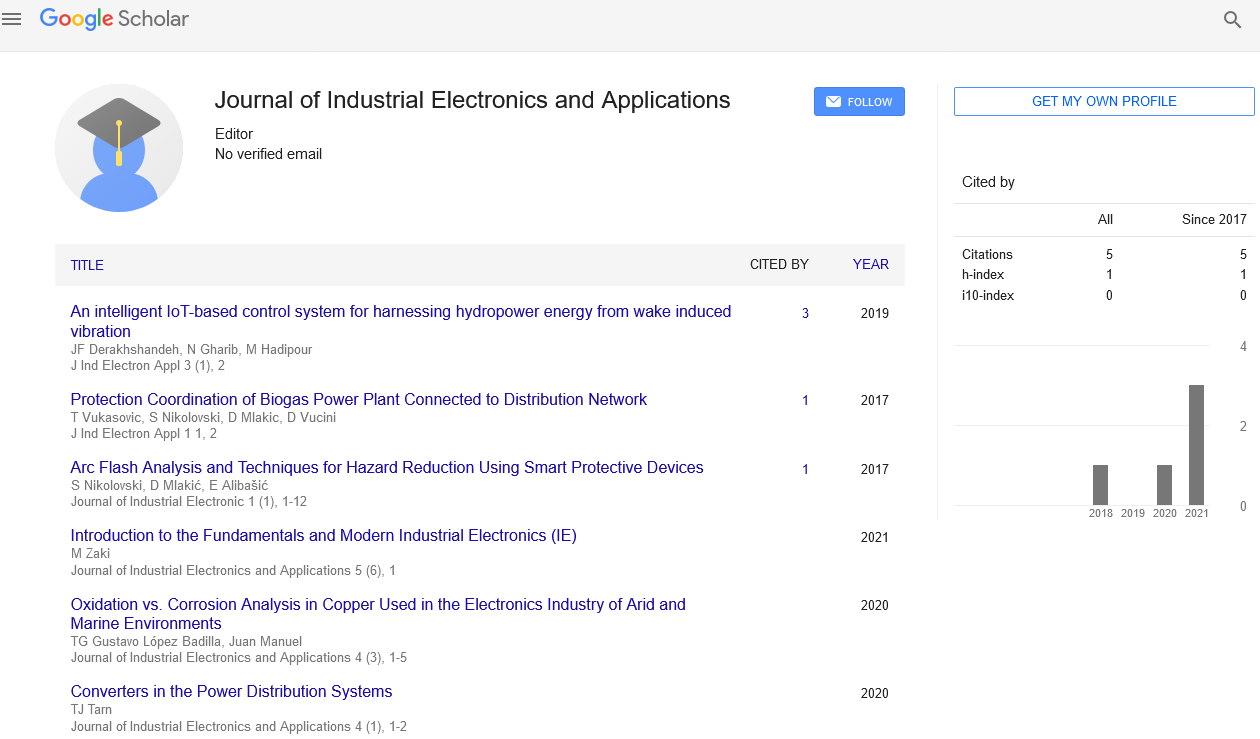Opinion Article, J Ind Electron Appl Vol: 7 Issue: 4
The Semiconductors Revolution in Advancing Power Electronic Systems in Aircrafts
Frison L. Mattingly*
1Department of Aerospace Engineering, University of Michigan, Ann Arbor, United States of America
*Corresponding Author: Frison L. Mattingly,
Department of Aerospace
Engineering, University of Michigan, Ann Arbor, United States of America
E-mail: frislmatt21@msu.edu
Received date: 01 November, 2023, Manuscript No. JIEA-23-124006;
Editor assigned date: 03 November, 2023, PreQC No. JIEA-23-124006 (PQ);
Reviewed date: 20 November, 2023, QC No. JIEA-23-124006;
Revised date: 27 November, 2023, Manuscript No. JIEA-23-124006 (R);
Published date: 04 December, 2023, DOI: 10.36648/JIEA.1000045
Citation: Mattingly FL (2023) The Semiconductors Revolution in Advancing Power Electronic Systems in Aircrafts. J Ind Electron Appl 7:4.
Abstract
The aviation industry is undergoing a transformative shift towards electrification, and power electronic systems play a pivotal role in this evolution. These systems are integral components that convert and control electrical power in aircraft, offering enhanced efficiency, weight savings, and improved overall performance.
Description
The aviation industry is undergoing a transformative shift towards electrification, and power electronic systems play a pivotal role in this evolution. These systems are integral components that convert and control electrical power in aircraft, offering enhanced efficiency, weight savings, and improved overall performance. This article provides an overview of power electronic systems in aircraft and their significant contributions to the electrification of aviation.
Electrification trends in aviation
Modern aircraft are increasingly adopting electrification as a means to enhance efficiency and reduce environmental impact. Traditional hydraulic and pneumatic systems are being replaced by electrically powered alternatives, and power electronic systems serve as the backbone of these advancements.
Key power electronic systems
More Electric Aircraft (MEA): The concept of More Electric Aircraft involves replacing hydraulic and pneumatic systems with electric power sources and distribution. Power electronic converters enable the efficient distribution of electrical power for various aircraft systems, including avionics, lighting, and actuators.
Electric propulsion systems: Electric propulsion systems, including electric motors and drives, are becoming more prevalent in aviation. Power electronic converters control the electrical energy supplied to these propulsion systems, enhancing fuel efficiency and reducing emissions.
Power Distribution Units (PDUs): Power Distribution Units play a crucial role in managing and distributing electrical power throughout the aircraft. Power electronic components within PDUs ensure that electricity is distributed efficiently to different subsystems, optimizing the overall power usage.
Variable frequency starter generators: Traditional aircraft utilize constant frequency generators, but newer variable frequency starter generators, driven by power electronic converters, offer improved efficiency and control. These systems provide variable speed operation, allowing for better matching of power generation to actual demand.
Advantages of power electronic systems
• Power electronic systems contribute to significant weight savings compared to traditional mechanical systems. This is crucial in aviation, where minimizing weight directly correlates with fuel efficiency and overall performance.
• Power electronic converters enable precise control of electrical power, improving the overall efficiency of aircraft systems. This enhanced control results in better performance, reduced energy waste, and optimized power distribution.
• Power electronic systems often incorporate redundant components, ensuring a high level of reliability. Redundancy is critical in aviation to maintain safety and operational continuity, especially in critical systems like avionics and propulsion.
Challenges and future developments
Power electronic systems generate heat during operation, and effective heat dissipation is a critical challenge. Ongoing research focuses on developing advanced cooling technologies to manage heat efficiently and ensure the reliability of power electronic components. Advancements in material science are essential for the integration of lightweight and high-performance materials into power electronic systems. This includes the use of advanced semiconductors and conductors to enhance efficiency and durability.
Conclusion
Power electronic systems are at the forefront of the aviation industry's electrification journey, ushering in a new era of efficiency and sustainability. As aircraft continue to transition towards electrification, power electronic components will play an increasingly integral role in shaping the future of aviation. Their ability to optimize power distribution, enhance control, and contribute to weight savings underscores their significance in making aircraft more eco-friendly and technologically advanced. The electrification of aviation is not just a trend but a transformative shift towards a cleaner and more efficient future for air travel.
 Spanish
Spanish  Chinese
Chinese  Russian
Russian  German
German  French
French  Japanese
Japanese  Portuguese
Portuguese  Hindi
Hindi 